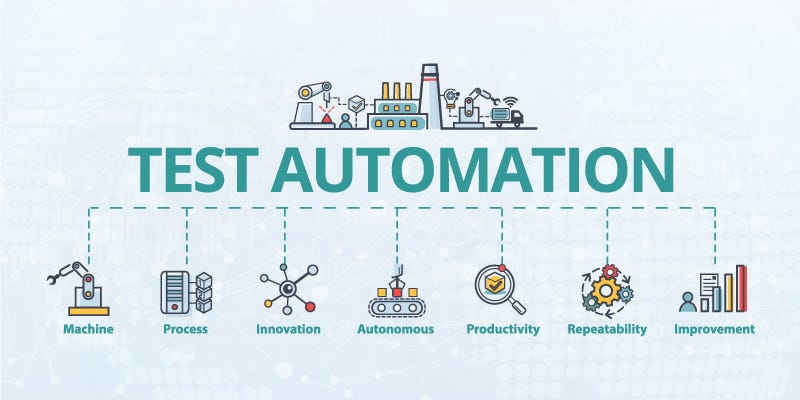The Best Guide to Implementing Automation Testing Efficiently
Ensuring Success in Automation Checking: Trick Metrics, Difficulties, and Solutions Every QA Group Should Know
In the realm of software application top quality guarantee, the landscape of automation screening is ever-evolving, requiring a thorough strategy to make certain smooth procedures. The trip to grasping automation testing is paved with nuances that call for a keen eye for monitoring, analysis, and continual renovation. As the sector moves forward, the pursuit for optimum efficiency in automation screening stays a continuous pursuit, prompting QA groups to furnish themselves with the expertise and approaches crucial for victory.
Significance of Key Metrics
Understanding the importance of essential metrics is vital for assessing the performance and performance of automation screening processes. Trick metrics function as measurable actions that give useful insights right into different aspects of the screening procedure, such as examination coverage, examination execution time, defect thickness, and test instance effectiveness. By analyzing these metrics, QA groups can determine traffic jams, ineffectiveness, and areas for improvement within their automation screening framework.
One essential facet of essential metrics is their capacity to track development and check the general health of the screening process (automation testing). They allow stakeholders to make informed decisions based upon data-driven insights, which can bring about more reliable testing methods and better source allotment. In addition, vital metrics can assist groups set practical objectives, measure the success of automation campaigns, and demonstrate the ROI of automation screening initiatives

Usual Obstacles Encountered
Obstacles frequently encountered in automation screening processes can substantially impact the total effectiveness and effectiveness of QA groups. Among the major obstacles is the choice of the best examination situations for automation. Not all examination situations are ideal for automation, and selecting the wrong ones can cause squandered time and sources. Furthermore, keeping examination scripts can be a difficult task, particularly as the application undertakes regular adjustments. Test script upkeep calls for constant updates and modifications to ensure they mirror the existing performance properly. One more usual challenge is the preliminary financial investment required for establishing up automation frameworks and tools. This can be an obstacle for some organizations, particularly smaller sized ones with limited budget plans. In addition, automation screening may not cover all facets of testing, such as use and individual experience screening, which still need hands-on intervention. Overcoming these obstacles calls for appropriate preparation, tactical examination case choice, durable upkeep processes, sufficient resources, and a clear understanding of the constraints of automation screening.
Efficient Solutions for Difficulties
To resolve the challenges come across in automation testing, executing effective remedies is crucial for improving the effectiveness and productivity of QA groups. One crucial service is to purchase durable training programs for QA teams to guarantee they have the necessary abilities to successfully utilize automation devices. Training can connect knowledge voids, enhance understanding of automation frameworks, and boost scripting abilities, ultimately bring about much more reliable test creation and implementation.
An additional crucial solution is to develop clear communication networks within the QA team and with various other stakeholders, such as programmers and project supervisors. Effective interaction helps in straightening expectations, sharing progression updates, and promptly dealing with concerns or obstacles that might develop read the full info here throughout the automation testing procedure.

Tracking and Evaluation Methods
Applying effective surveillance and analysis methods is essential for making certain the success and efficiency of automation screening processes. Furthermore, analyzing test outcomes and metrics provides useful understandings into the quality of the software program being tested and the efficiency of the screening strategy.
One secret strategy in monitoring and analysis is the usage of dashboards that combine pertinent metrics and KPIs in an aesthetically available layout. These control panels offer a detailed overview of examination execution condition, test insurance coverage, issue trends, and other important details. On a regular basis reviewing and examining these control panels can aid QA groups make informed decisions, prioritize tasks, and enhance screening initiatives.
Furthermore, executing automated informs and alerts based upon predefined limits can enhance positive tracking and timely intervention. By establishing notifies for performance discrepancies or test failures, teams can resolve concerns promptly and prevent them from escalating. In general, tracking and analysis methods play a crucial function in making sure the efficiency and success of automation screening campaigns.
Continual Improvement Approaches
Enhancing the efficacy of automation testing processes demands the consistent refinement of methods and methods. One key technique to boosting automation screening procedures is to carry out routine evaluations and retrospectives.
Conclusion
In final thought, it is important for QA groups to understand the crucial metrics, challenges, and services in automation screening to make sure success. By thoroughly keeping track of and analyzing information, implementing effective solutions to usual challenges, and constantly improving techniques, QA groups can enhance their testing procedures and provide premium software. Abiding by these practices will inevitably cause more reliable and reliable automation screening practices.
By examining these metrics, QA groups can identify traffic jams, inadequacies, and locations for enhancement within their automation testing structure.
Additionally, essential metrics can assist groups established reasonable objectives, gauge the success of automation efforts, and demonstrate the ROI of automation testing efforts.
Obstacles frequently experienced in automation testing processes can dramatically influence the Going Here overall performance and effectiveness of QA groups. Automation testing may not cover all check that facets of screening, such as usability and user experience testing, which still call for manual treatment.In final thought, it is vital for QA teams to comprehend the vital metrics, difficulties, and services in automation testing to guarantee success.